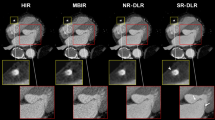Abstract
Coronary heart disease is a heart disease caused by coronary atherosclerosis, which seriously endangers human life and health. More and more studies have shown that diabetes is one of the main pathogenic factors of coronary heart disease and has an important relationship with coronary heart disease. At present, the mainstream treatment of coronary heart disease complicated with diabetes mellitus is the use of coronary angiography, which is the gold standard of treatment at present. However, it still has a certain risk, and most of the postoperative complications, the improvement method is to use FFR evaluation standard. At present, there are few special researches on this aspect. Therefore, this paper proposes the application research of FFR based on deep learning in the diagnosis of coronary heart disease complicated with diabetes mellitus. Through the core theoretical research on coronary heart disease complicated with diabetes mellitus and FFR, this paper analyzes that the existing coronary angiography is still in the development stage, which has a positive effect on the treatment of coronary heart disease and diabetes mellitus. On this basis, combined with FFR can play a better therapeutic effect. The second part is the establishment method of the related comparative experiment. This experiment adopts real coronary heart disease complicated with diabetes cases, through the way of random grouping, each group of 41 people, one group was FFRCT group, the other was FFRQCA group, and in order to ensure the experimental effect, a unified evaluation index is established. In the third part, the comparative analysis of the experimental methods of angina pectoris was carried out. Through the analysis of experimental data, it is shown that the safety, postoperative complications control and comprehensive treatment effect of this method are significantly improved compared with the traditional methods.




Similar content being viewed by others
References
Romuk E, Skrzep-Poloczek B, Wojciechowska C, Tomasik A, Tendera M (2015) Selectin-p and interleukin-8 plasma levels in coronary heart disease patients. Eur J Clin Invest 32(9):657–661
Ference BA, Majeed F, Penumetcha R, Flack JM, Brook RD (2015) Effect of naturally random allocation to lower low-density lipoprotein cholesterol on the risk of coronary heart disease mediated by polymorphisms in NPC1L1, HMGCR, or both. J Am Coll Cardiol 65(15):1552–1561
Ann Marie NB, Peterson ED, D’Agostino RB, Benjamin N, Sniderman AD, Pencina MJ (2015) Hyperlipidemia in early adulthood increases long-term risk of coronary heart disease. Cardiovasc Disease J Engl Vers 131(1):64–64
Borghi C, Rossi F (2015) Role of the renin-angiotensin-aldosterone system and its pharmacological inhibitors in cardiovascular diseases: complex and critical issues. High Blood Press Cardiovasc Prev 22(4):429
Bertino E, Jahanshahi MR, Singla A et al (2021) Intelligent IoT systems for civil infrastructure health monitoring: a research roadmap. Discov Internet Things 1:3
Wang B, Cao J, Liu Q, Chen J (2018) Effects of subclinical hypothyroidism on hemorheology in patients with type 2 diabetes mellitus complicated with coronary heart disease. Med J Wuhan Univ 39(1):136–139
He CX, Yang JJ, Yuan MJ, Ding XJ (2016) The changes of serum bdnf, blood lipid and pci in the elderly patients with coronary heart disease complicated with diabetes mellitus. J Hainan Med Univ Engl Edn 22(016):184–188
Barbato E, Toth GG, Johnson NP, Pijls NHJ, Fearon WF, Tonino PAL et al (2016) A prospective natural history study ofcoronary atherosclerosis using fractional flow reserve. J Am Coll Cardiol 68(21):2247–2255
Hlatky MA, De BB, Pontone G, Patel MR, Norgaard BL, Byrne RA et al (2015) Quality-of-life and economic outcomes of assessing fractional flow reserve with computed tomography angiography: platform. J Am Coll Cardiol 66(21):2315–2323
Ladwiniec A, Hoole SP (2015) Clinical outcome benefit associated with fractional flow reserve guided angioplasty, but is it “one size fits all”? Interv Cardiol 7(3):235–237
Muhammad Y, Khan R, Ullah F et al (2020) Design of fractional swarming strategy for solution of optimal reactive power dispatch. Neural Comput Appl 32:10501–10518
Thompson AG, Raju R, Blanke P, Yang TH, Mancini GBJ, Budoff MJ et al (2015) Diagnostic accuracy and discrimination of ischemia by fractional flow reserve CT using a clinical use rule: results from the determination of fractional flow reserve by anatomic computed tomographic angiography study. J Cardiovasc Comput Tomogr 9(2):120–128
Chen Y, Lin Z, Zhao X, Wang G, Gu Y (2017) Deep learning-based classification of hyperspectral data. IEEE J Sel Top Appl Earth Obs Remote Sens 7(6):2094–2107
Lv Y, Duan Y, Kang W, Li Z, Wang FY (2015) Traffic flow prediction with big data: a deep learning approach. IEEE Trans Intell Transp Syst 16(2):865–873
Zhou J, Troyanskaya OG (2015) Predicting effects of noncoding variants with deep learning-based sequence model. Nat Methods 12(10):931–934
Acknowledgements
This work was supported by People’s Livelihood Science and Technology Project of Qingdao (No.19-6-1-26-nsh); Key Fund of Department of Cardiology, Shandong University Qilu Hospital (Qingdao) (QDKY2019ZD04), 2022 People’s Livelihood Science and Technology Project of Qingdao (Application of DEEPVESSEL FFR in coronary artery heart disease complicated with diabetes mellitus), Qingdao Key Health Discipline Developent Fund.
Author information
Authors and Affiliations
Corresponding authors
Ethics declarations
Conflict of interest
There is no potential competing interest in our paper. And all authors have seen the manuscript and approved to submit to your journal. We confirm that the content of the manuscript has not been published or submitted for publication elsewhere.
Additional information
Publisher's Note
Springer Nature remains neutral with regard to jurisdictional claims in published maps and institutional affiliations.
Rights and permissions
About this article
Cite this article
Wang, Z., Yin, H., Jing, W. et al. Application of CT coronary flow reserve fraction based on deep learning in coronary artery diagnosis of coronary heart disease complicated with diabetes mellitus. Neural Comput & Applic 34, 6763–6772 (2022). https://doi.org/10.1007/s00521-021-06070-y
Received:
Accepted:
Published:
Issue Date:
DOI: https://doi.org/10.1007/s00521-021-06070-y




